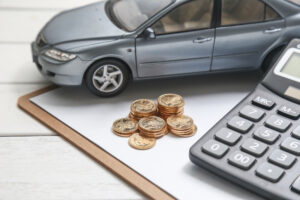In the excitement of buying a new car, some people make the mistake of not fully understanding the best finance options available to them. In the first of our 3-part Vehicle Finance series, we talk about Balloon Payments.
The majority of South African drivers cannot afford to buy their cars outright and rely on vehicle finance from banks. There are a few different vehicle finance options available to customers, namely:
- Balloon Payments
- Installment Finance
- Guaranteed Future Value
But how do you know which one is best for you? To help you make better-informed decisions, here is what you ought to know about Balloon Payments.
For those in the car market, right now is actually a great time to buy thanks to the current low-interest rates combined with some tasty offers from car dealers around the country.
– Ghana Msibi, CEO of WesBank Motor Division

Balloon payments
This is a convenient solution designed to assist the buyer with cash flow at the start of a finance agreement.
A portion of the purchase price is set aside in order to lower monthly repayments, but it’s important to remember this deferred amount will still be owed to the bank at the end of the contract term.
Balloon payments require discipline to be used effectively, and customers opting for this arrangement should make sure they’re saving enough cash every month to settle the debt once the instalment period is complete.
While the benefits that come with keeping monthly costs down may be extremely appetizing, it is important not to view a balloon deal as a way to get into a car you simply cannot afford.
– GHANA MSIBI, CEO OF WESBANK MOTOR DIVISION
Think of a balloon payment as a deposit, but one that’s put down at the end of the contract term instead of at the beginning. Depending on the size of the balloon, the money saved on the monthly payments should more than cover the cost of interest for a loan to refinance the lump sum of debt at the end of the term.
In other words, saving the money yourself while driving the financed vehicle could be cheaper than it would be to apply for another bank loan to pay off the outstanding debt owing on the car.
“While the benefits that come with keeping monthly costs down may be extremely appetizing, it is important not to view a balloon deal as a way to get into a car you simply cannot afford,” says Msibi.
“A looming lump sum after years of driving a vehicle is easy to ignore and forget, but settling that debt is ultimately the responsibility of the buyer. That said, a balloon payment has some great advantages if used properly.
* All F&I consultants are regulated by the Financial Advisory and Intermediary Services (FAIS) Act and the National Credit Act (NCA).






